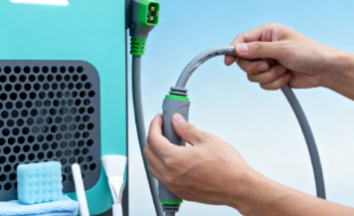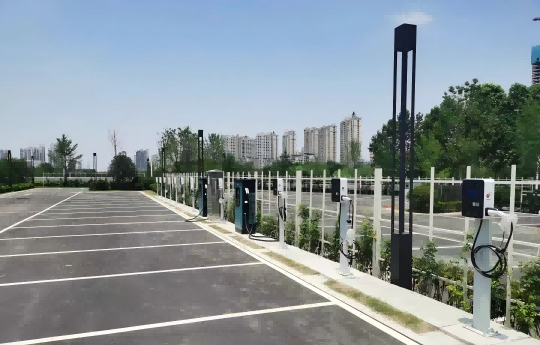Dec 18, 2025
As the global adoption of electric vehicles continues to accelerate, EV charging infrastructure is no longer just about delivering electricity—it is about building a reliable, scalable, and intelligent ecosystem. For manufacturers, operators, businesses, and end users alike, OCPP compliance has become a critical factor in ensuring long-term success. As a professional new energy EV charging equipment manufacturer, USTEU understands that OCPP is not just a technical protocol, but a foundation for interoperability, safety, and future growth.
1. Understanding OCPP in Real-World Charging Scenarios
OCPP (Open Charge Point Protocol) is an open communication standard that allows EV chargers to communicate with charging management systems. In real usage scenarios, this means that a charging station installed at a home, hotel, office, or public parking lot can be monitored, controlled, and updated remotely through a centralized platform.
For EV owners, this translates into stable charging sessions, accurate billing, and fewer interruptions. For operators, it enables real-time visibility into charger status, energy usage, fault alerts, and performance analytics.
2. Why OCPP Matters for Daily Users
From a user’s perspective, reliability is everything. An EV driver arriving at a charging station expects it to work seamlessly. OCPP-compliant chargers help ensure that authentication, charging start/stop commands, and payment processes function smoothly.
In residential settings, users benefit from smart scheduling, energy monitoring, and remote control via mobile apps. In commercial environments such as hotels or offices, OCPP enables fair billing, user access control, and efficient load management—key elements that directly affect the charging experience.
3. Operational Efficiency for Businesses and Operators
For charging station operators, OCPP compliance reduces vendor lock-in. This means operators are not restricted to a single backend platform or software provider. They can switch management systems, expand their networks, or integrate third-party services without replacing hardware.
This flexibility is essential for businesses planning long-term investments. Whether deploying a small number of chargers or scaling to hundreds of units across multiple locations, OCPP ensures consistent operation and centralized management.
4. Enhancing Safety and Maintenance
OCPP also plays a vital role in safety and maintenance. Through remote diagnostics, system operators can detect abnormal behavior such as overheating, power fluctuations, or communication errors before they become serious issues.
For manufacturers like USTEU, OCPP enables remote firmware updates, ensuring chargers stay compliant with evolving standards and security requirements. This reduces on-site maintenance costs and minimizes downtime for users.
5. Supporting Future-Proof EV Charging Infrastructure
The EV market is evolving rapidly. New payment methods, renewable energy integration, smart grids, and vehicle-to-grid (V2G) technologies are shaping the future of charging ecosystems. OCPP compliance allows charging stations to adapt to these changes without hardware replacement.
For property owners, this means protecting their investment. For EV users, it means access to smarter, more efficient charging solutions over time.
6. Why USTEU Prioritizes OCPP Compliance
As a new energy EV charging manufacturer, USTEU designs its charging solutions with interoperability and long-term performance in mind. By supporting OCPP standards, USTEU ensures its products can seamlessly integrate into diverse charging networks, whether for home use, commercial deployment, or public infrastructure.
This commitment allows customers to focus on growth and user experience, rather than compatibility issues or system limitations.
Conclusion
OCPP compliance is no longer optional—it is essential for building a reliable, scalable, and future-ready EV charging ecosystem. From enhancing daily user experiences to empowering operators with flexibility, safety, and control, OCPP forms the backbone of modern EV charging infrastructure. By choosing OCPP-compliant solutions from trusted manufacturers like USTEU, stakeholders can confidently move toward a smarter, more sustainable electric mobility future.
Read More


